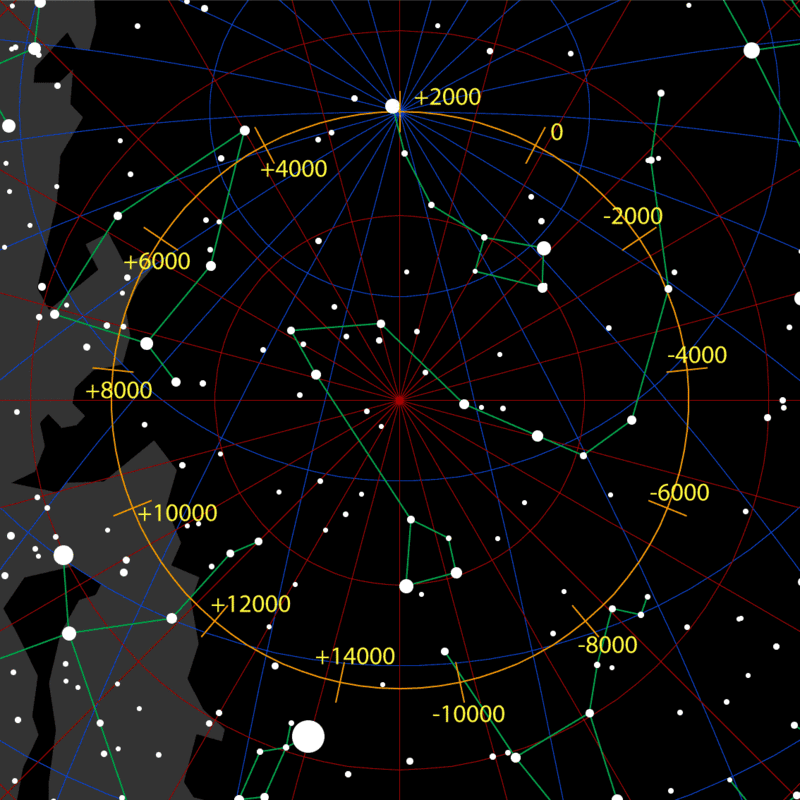Hi,
today I will write about precession and what effect it has on our sky.
Polaris is the North Star or Pole Star. This means that it is close to the celestial pole. Celestial pole is a point created by expanding the Earth’s axis of rotation and piercing through the celestial sphere which is imaginary “area” where stars sit. (For Earth based observations you do not really need to take into account that the stars are in completely different distances from us)

Precession is shown by the circle on the top.
But Polaris was not always the North star. For example when the Great Pyramid of Giza was build aobut 4600 years ago, there were two shafts from the tomb added. One points towards some random stop in the sky and the other one to Polaris.. oh wait but 2600 BC it pointed to Orion’s Belt and the star Thuban in the constallation of Draco. Orion was in Egyptian mythology connected to the god of dead Osiris and Thuban used to be the star closest to celestial pole. WHY?

Orange circle shows how the celestial pole’s position will change during the next years
Because of precession. That is an effect on Earth by Moon and Sun. The same way as gyroscope creates a kind of cone shape with it top, Earth also rotates like this but very slowly, it takes about 26000 years to rotate once. This type of precession is also called axial precession.
On the southern hemisphere the South Star is Sigma Octantis. It has very high magnitude so it is barely visible and not very good for naked eye observation. This will of course also change in the next hundreds of years.
Because of precession astronomers have to update every 50 years the positions of stars and objects, right now we are in what is called J2000 epoch and the next one will be J2050.
Dragallur
1st picture: By NASA, Mysid – Vectorized by Mysid in Inkscape after a NASA Earth Observatory image in Milutin Milankovitch Precession., Public Domain, https://commons.wikimedia.org/w/index.php?curid=3993432
2nd picture: By Tauʻolunga – self, 4 bit GIF, CC BY-SA 2.5, https://commons.wikimedia.org/w/index.php?curid=891838



